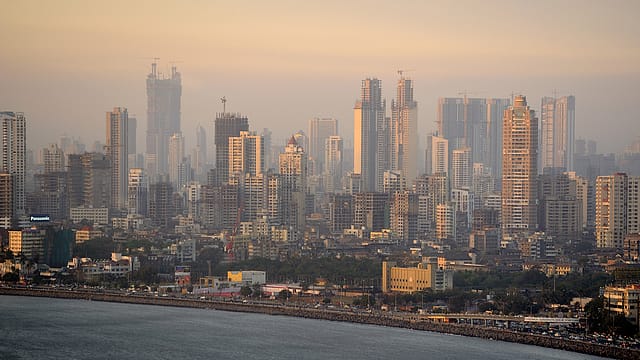Budget 2022: Urban infra, municipal reforms key to growth
ADVERTISEMENT

India is the second largest urban system in the world and its urban growth is expected to contribute to 73% of the total population increase in the country by 2036. With India’s urban population projected to grow to around 600 million or 42% of the total population in 2030 from 377 million in 2011, managing this urbanisation and planning for a sustainable growth trajectory will be of paramount importance.
Government of India’s outlay for urban development has been increasing year on year through its various Mission mode programs like AMRUT, Smart Cities, Swachh Bharat, Pradhan Mantri Awas Yojna etc. The sector accounts for 17% of the National Infrastructure Pipeline, translating to investments of approximately ₹19,19,267 crores between FY20 – FY25. Key initiatives include AMRUT 2.0, which was announced in October 2021, and involves enhancing water connections in around 4,800 urban local bodies, sewerage/septage services in 500 cities as well as rejuvenation of water bodies, green spaces and parks. Further, Swachh Bharat Mission-Urban 2.0, was announced in October 2021 with the aspiration of making all cities garbage free and the Gati Shakti Master Plan, was unveiled in October 2021 to enable a coordinated approach to multi modal connectivity that will lead to urban development around economic zones.
Going forward, the following key issues need to be kept in mind, some of which may find place in the forthcoming Budget 2022–23:
Municipal Reforms: Continued focus will remain on urban local body (ULB) reform to financially strengthen ULBs to enable them to provide better public health, sanitation and other citizen centric services. Innovative financing mechanisms like asset monetisation, data monetisation, carbon credit financing, issuance of municipal bonds should be encouraged along with enabling user charges and innovation in structuring PPPs for making ULBs sustainable and self-reliant. Allocations and incentives may be provided for increasing private participation in new urban centres and for establishment of municipal shared services across districts and states.
December 2025
The annual Fortune 500 India list, the definitive compendium of corporate performance, is out. This year, the cumulative revenue of the Fortune 500 India companies has breached $2 trillion for the first time. Plus, find out which are the Best B-schools in India.
Digital Transformation: Leveraging the investments made over the last six years in digital infrastructure and technology across urban centres through initiatives like Digital India and Smart Cities Mission, further focus should be on cloud based shared digital infrastructure at state as well as district level. While artificial intelligence (AI), machine learning (ML), high-speed broadband already feature in the plans, shared development and integration with the other towns/peri urban areas will make infrastructure more efficient and sustainable.
Basic Infrastructure: Providing housing, especially affordable housing, for the large population migrating to urban centres will remain a key priority for the country. The government is likely to continue providing necessary incentives and strengthening regulatory processes to attract private investments in the housing sector, especially in affordable housing. Continued focus on schemes like AMRUT, Swachh Bharat Mission and new schemes like Gati Shakti highlight the continued emphasis on basic urban facilities like piped water, sanitation and drainage, rejuvenation of water bodies, green spaces, multi-modal connectivity etc.
Urban Mobility: While the country is focusing on development of road networks, metro rails and tunnel networks, the urban centres will witness a growth in sustainable public transportation fleets and non- motorised transport options. Electric vehicles (EV) and associated infrastructure development – both in the public space and private space – will require incentive and policy support. Enabling policies should be rolled out for adoption of EV by state governments and private sector users.
Climate Resilient Infrastructure: India’s committed to net zero emissions by 2070 and its climate goals committed during COP26 in Glasgow, UK, will necessitate investment in non-fossil fuel energy capacity, increased green cover, better solid waste management, development of green buildings and shift to public transportation. Necessary incentive roll out will be needed for cities to implement the target set for zero emission and to achieve the basic tenets of India’s National Action Plan on Climate Change (NAPCC). Investment in solar and wind energy along with hydrogen power initiatives will need policy support from the government and greater private sector participation.
While public investment in strengthening core infrastructure in the larger urban centres will continue, the need of the hour is to invest in the development of census towns and peri-urban centres. With an increase in urban population, the existing urban centres will face challenges in absorbing the migrating population. Focused intervention on the 3,800 census towns will facilitate spatial dispersal of economic activities and job opportunities and lead to equitable development across the country.
With 75% of India’s GDP likely to be generated by its cities in 2030, sustaining urban investments is critical for meeting the growth aspirations of the country.
Debashish Biswas is Partner; and Sanghamitra Sanyal is Director with Deloitte Touche Tohmatsu India LLP
